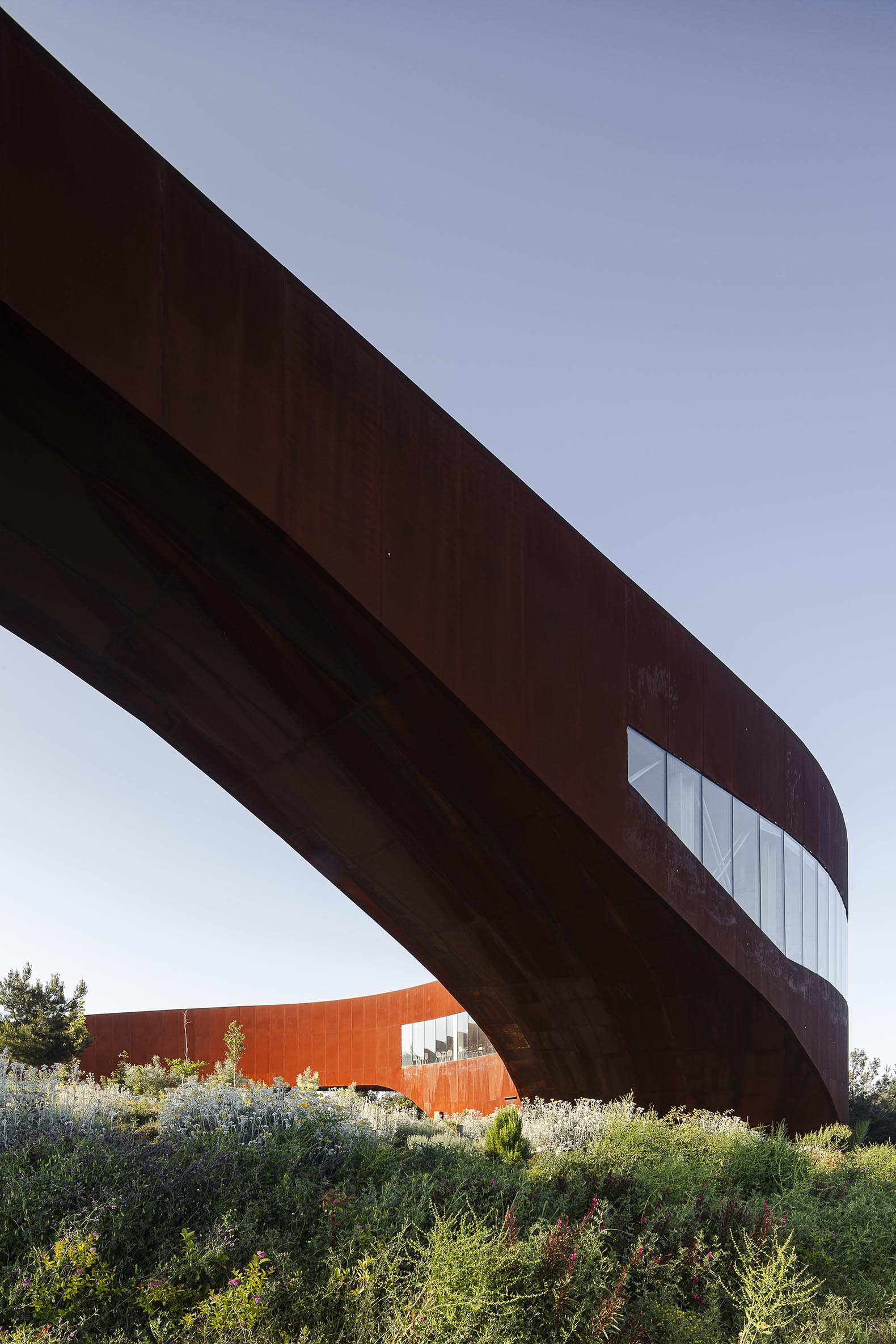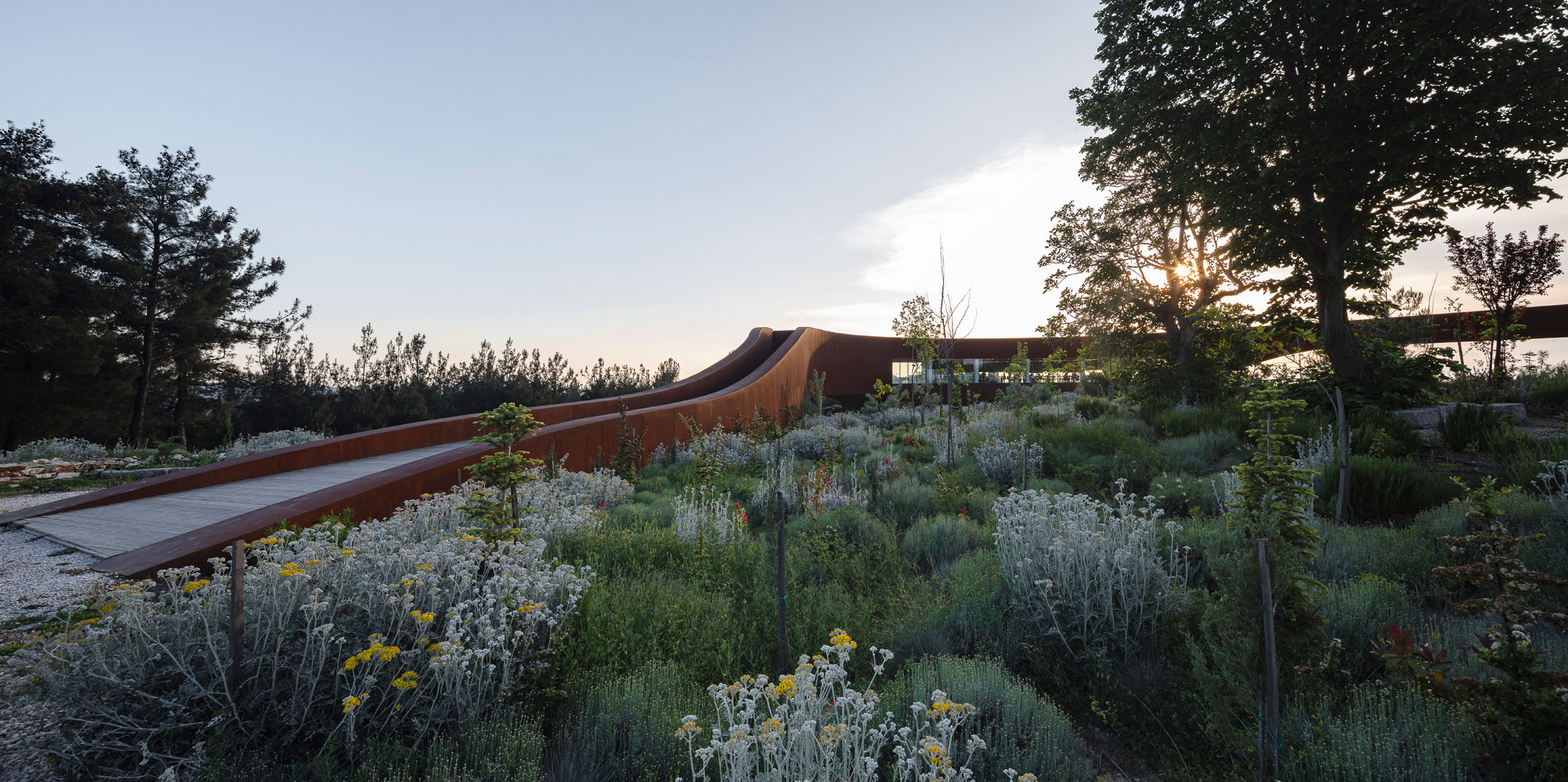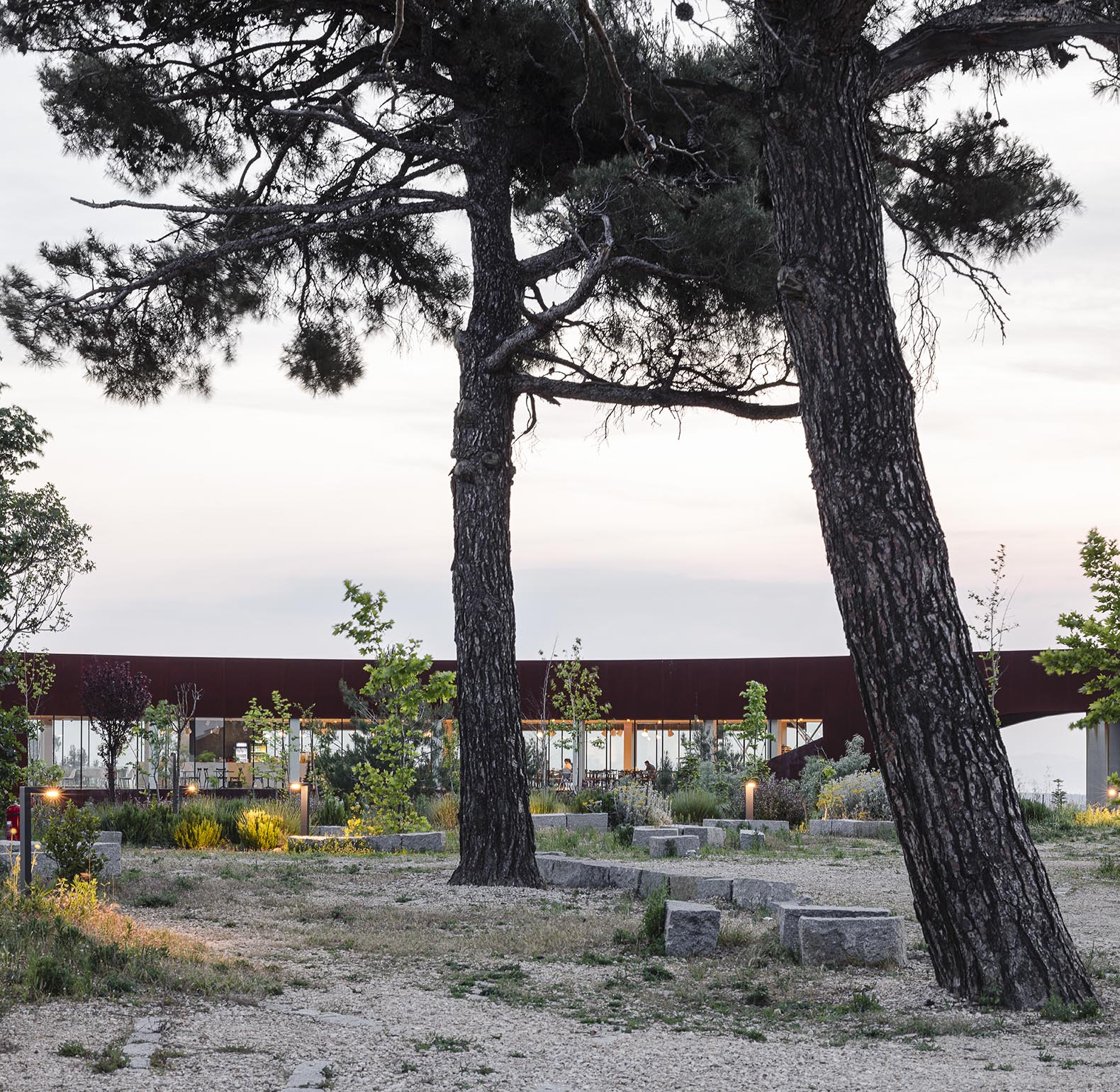Çanakkale Antenna Tower's public areas were left separated from the technical areas, which are located in a concrete underground bunker. The looping of the tower has a walkable floor, which continues the forest path and is made from wood.
According to the brief requested the 100m tall tower would not deform more than 1 degree facing winds up to 160km/h. This has led the structural engineers to come up with a solution that would use structural façade elements of steel plates up to 40mm combined with internal stiffeners. In turn, the tower was built out of modules to be assembled on-site.

Canakkale Antenna Tower by IND + Powerhouse Company. Photograph by Fernando Alda.

Canakkale Antenna Tower by IND + Powerhouse Company. Photograph by Fernando Alda.
Project description by IND [Inter.National.Design] + Powerhouse Company
Located at the top of a hill with breathtaking views of the Dardanelles, the project consolidates existing telecommunication towers into one and creates a public park enriched with viewing platforms, a visitor center, and a restaurant.
It has become a commonplace situation to find around the world a collection of telecommunication towers on top of hills. Besides the visual impacts of the multiple towers, the current standard procedure also brings with it erosion, landscape fragmentation, destruction of habitats, and the loss of interest of nature lovers in those usually precious locations. The impact of such infrastructure in the landscape has been received worldwide with passivity as if nothing could be done since we all need to be connected to the internet, radio, and tv at all times regardless of its environmental and social costs.
The brief of this international competition asked to challenge that position. It asked participants to come up with an elegant, environmentally conscious, and economically viable solution that not only improved the physical aspects of the broadcasting infrastructure by consolidating the collections of several towers into a single tower but also asked to open up this infrastructure-only program into a public space location by combining it with recreational uses such an exhibition area, a visitor center and a restaurant. The brief suggested designing this iconic tower involving all programs in one formal gesture.
Canakkale Antenna Tower by IND + Powerhouse Company. Photograph by Fernando Alda.
After failing to achieve a formal result that was also compatible with the environment due to its overloaded formal needs our team decided to explore a different direction that did not literally respond to the brief. With the advice of our telecommunication engineers to place the tower as far away as possible from the public program due to its hazardous radiations and the happy coincidence that the plot offers a peripheral belt due to the existence of an inner plot to be left untouched, we came up with the idea of an outer binding viewing platform that would encircle the project.
We then decided to locate the program at different points of the plot with the tower at the entrance and the public program facing the better views of the surroundings at the opposite end. The project would be then reunited formally by the outer band that offered break-taking views of the Dardanelles. The loop would deform itself in plan and section to conform to a tall entrance canyon, a wide viewing terrace deck with the main public needs beneath it, an elevated narrow viaduct, and finally the tower itself that appears to complete this ring from both ends.
The formal result of the levitating outer ring with the tower in the background subtly accentuates the contours of the hills making infrastructure, landscape, and architecture a place of dialogue and mutual enrichment.
Canakkale Antenna Tower by IND + Powerhouse Company. Photograph by Fernando Alda.
The loop solution offered another feature, the creation of an internal garden where we could showcase indigenous flower vegetation and restore the eroded land with healthy soil and young forest trees. Rather than a domesticated landscape the garden appears to be a wild place blurring the distinction between the plot vegetation and the surrounding forest landscape. Its walking paths marked with local stones are rather suggestions than defined trajectories. Stone boulders as seating devices complete the landscape proposal.
Canakkale Antenna Tower by IND + Powerhouse Company. Photograph by Fernando Alda.
The brief requested that the 100m tall tower would not deform more than 1 degree facing winds up to 160km/h. This has led the structural engineers to come up with a solution that would use structural façade elements of steel plates up to 40mm combined with internal stiffeners. In turn, the tower would be built out of modules to be assembled on-site. The entire project finishing material is corten steel. This option offered a more subtle binding of the project to the natural colors of the landscape, also changing in tone according to sun exposure and wind.










































![Rendering. Canakkale Antenna Tower image courtesy of IND [Inter.National.Design]. Rendering by MIR Rendering. Canakkale Antenna Tower image courtesy of IND [Inter.National.Design]. Rendering by MIR](/sites/default/files/styles/mopis_home_news_category_slider_desktop/public/lead-images/metalocus_canakkale-antenna-tower-ind-inter.national.design-powerhouse-company-felix-madrazo-arman-akdogan_02.jpg?h=9ead5299&itok=SzT2KuB_)







